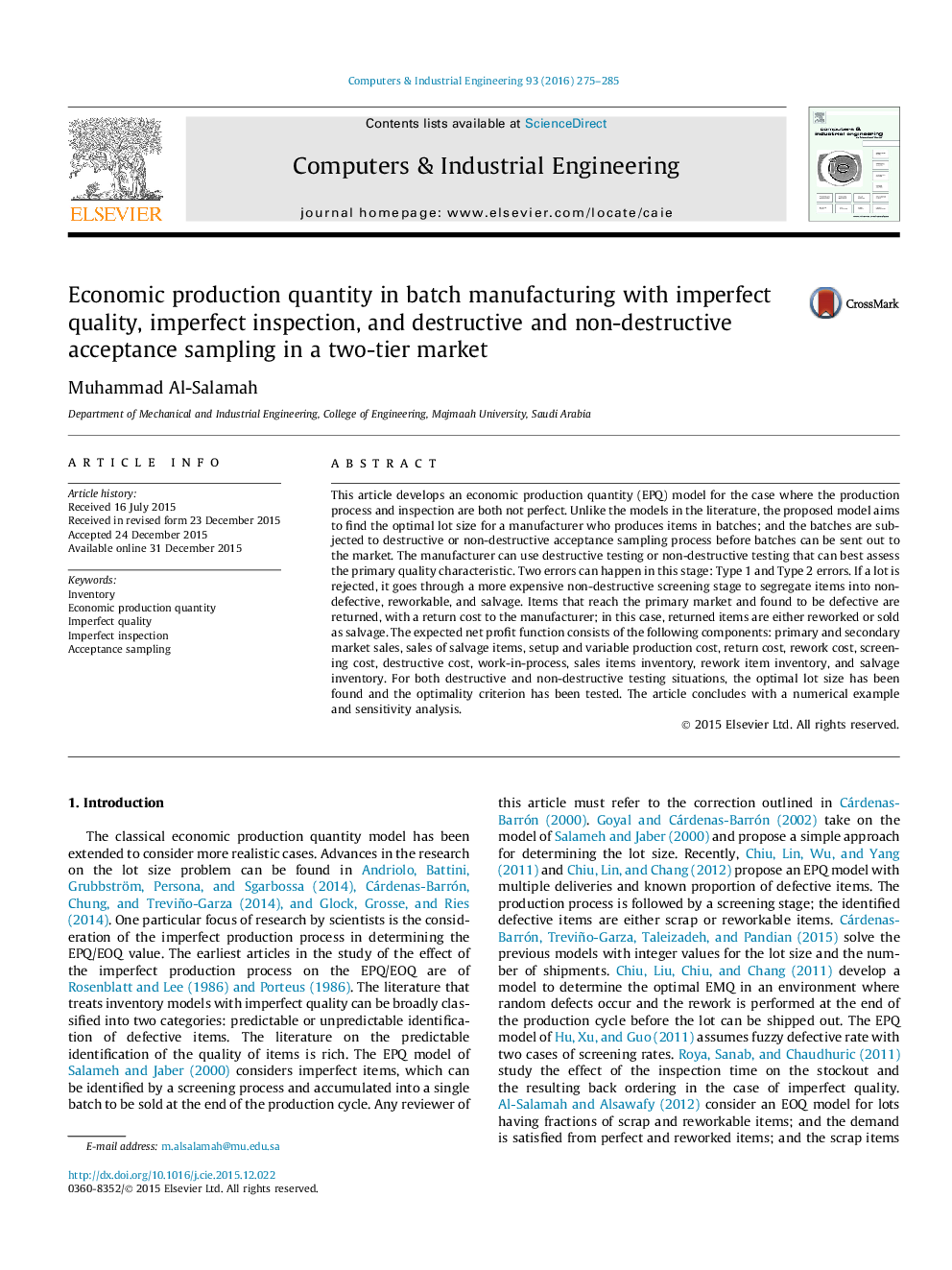| Article ID | Journal | Published Year | Pages | File Type |
|---|---|---|---|---|
| 1133382 | Computers & Industrial Engineering | 2016 | 11 Pages |
•EPQ model with imperfect quality items is developed.•Acceptance sampling with destructive and non-destructive testing is integrated into the model.•Misclassification of items is assumed with two types of errors: Type 1 and Type 2.•Two markets: primary market for nondefective items and secondary market for reworked and rejected nondefective items.•The optimal lot sizes have been found and proven and a sensitivity analysis of the model parameters is included.
This article develops an economic production quantity (EPQ) model for the case where the production process and inspection are both not perfect. Unlike the models in the literature, the proposed model aims to find the optimal lot size for a manufacturer who produces items in batches; and the batches are subjected to destructive or non-destructive acceptance sampling process before batches can be sent out to the market. The manufacturer can use destructive testing or non-destructive testing that can best assess the primary quality characteristic. Two errors can happen in this stage: Type 1 and Type 2 errors. If a lot is rejected, it goes through a more expensive non-destructive screening stage to segregate items into nondefective, reworkable, and salvage. Items that reach the primary market and found to be defective are returned, with a return cost to the manufacturer; in this case, returned items are either reworked or sold as salvage. The expected net profit function consists of the following components: primary and secondary market sales, sales of salvage items, setup and variable production cost, return cost, rework cost, screening cost, destructive cost, work-in-process, sales items inventory, rework item inventory, and salvage inventory. For both destructive and non-destructive testing situations, the optimal lot size has been found and the optimality criterion has been tested. The article concludes with a numerical example and sensitivity analysis.
